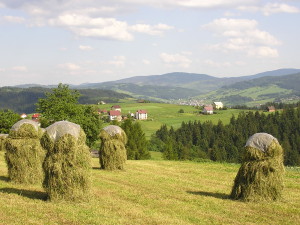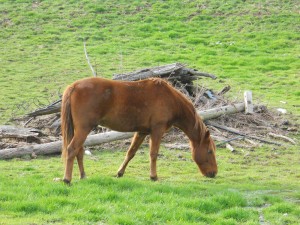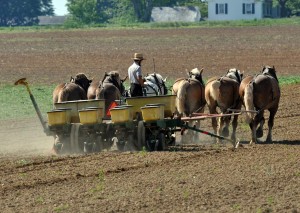

Livestock And Cattle Feed For An Ideal Sustainable Farm Production

Getting the proper feed for your livestock is very important for production of healthy livestock and farm products. Most farmers today have also become environmentally conscious and are inclined towards growing farms with organic and environmentally safe products and methods of farming, rather than conventional farming methods. The modern sustainable farming methods involve minimal use of synthetic fertilizers, GMO, and toxic insecticide in the farms.
Feed for the cattle farms
An ideal cattle feed should contain a combination of both fodder and forage. Fodder is the kind of animal feed which is prepared and brought to the animals, and it plays an important role in any kind of animal farming.
Fodder
 To feed any type of domesticated animal such as cattle, chicken, pigs, horses, goats, sheep and similar animals for maximum animal products, the feed needs to be specially prepared and fed to the animals. The feed needs to have a higher quality of nutrition value, and the best combination of proteins, carbohydrates, vitamins and minerals in them to get maximum results. Most animal feeds can be produced from plants or plant products in organic methods without using any chemicals, or any use of medicines or GMOs.
To feed any type of domesticated animal such as cattle, chicken, pigs, horses, goats, sheep and similar animals for maximum animal products, the feed needs to be specially prepared and fed to the animals. The feed needs to have a higher quality of nutrition value, and the best combination of proteins, carbohydrates, vitamins and minerals in them to get maximum results. Most animal feeds can be produced from plants or plant products in organic methods without using any chemicals, or any use of medicines or GMOs.
Some fodder can be designed to provide the animals with additional nutrition in addition to their regular diet. The animals that eat forage or graze on their own, fodder or additional supplementary food can be designed to give them an added growth and boost their capacity to produce more meat, eggs, or milk, depending on the type of animal you are growing.
Forage
 For any grazing animals and cattle, it is important that they are left to feed freely on their own in a farm land. An ideal grazing land in a farm should contain a pasture with both, edible grasses, as well as trees, shrubs, and plants with leaves, stems, and so on, for the animals to feed on. There are few specific forage crops that can be grown for the grazing animals and cattle according to their needs to maximize their growth naturally. Barley, for example, is a crop sometimes grown as a forage crop for animals to graze on.
For any grazing animals and cattle, it is important that they are left to feed freely on their own in a farm land. An ideal grazing land in a farm should contain a pasture with both, edible grasses, as well as trees, shrubs, and plants with leaves, stems, and so on, for the animals to feed on. There are few specific forage crops that can be grown for the grazing animals and cattle according to their needs to maximize their growth naturally. Barley, for example, is a crop sometimes grown as a forage crop for animals to graze on.
Types of cattle feed
Cattle feed can come in three basic forms.
-
Pelletized cattle feed: some palletized feed is available for farmers to meet the specific needs of the cattle for higher beef and milk production. The elements which are ideal for cattle feed is crushed and formed into pellet. Supplementing the cattle with palletized feed can benefit the farmers greatly.
-
Sweet feed: Sweet feed can be prepared form sweet fresh grains of corn, oats and molasses plus pellets. It is an ideal feed for young growing horses and cattle.
-
Block feed: this kind of feed has several high quality food milled and made into blocks to give the animals a higher nutrition value. This kind of feeding can improve the animals’ digestion and lactation process.
Planning for Cattle Feed
 You should plan for feeding your cattle and livestock especially if the weather forecasts for a dry season. If you are facing shortages of food during the winter seasons, you should harvest and carry all the hay you can from the roadsides. During the summer, the animals can graze on poor crop stands, rye planted the previous year or spring planted oats. Cattle can also feed on straws and hays saved form cereal crops. Adding more amino acid rich food to the cattle feed can improve digestion in animals and can help produce higher amount of quality animal proteins.
You should plan for feeding your cattle and livestock especially if the weather forecasts for a dry season. If you are facing shortages of food during the winter seasons, you should harvest and carry all the hay you can from the roadsides. During the summer, the animals can graze on poor crop stands, rye planted the previous year or spring planted oats. Cattle can also feed on straws and hays saved form cereal crops. Adding more amino acid rich food to the cattle feed can improve digestion in animals and can help produce higher amount of quality animal proteins.
Feeding of calf
No matter what system of feeding you adopt for your cattle, your calves should always receive the first milk from their mothers after they give birth to calves. They should be fed enough colostrum through the milk, ideally 2- 2.5 liters a day for the first three days at least. This ensures the health and proper growth of the calves, as well as develops a stronger immune system.
 One Response
One Response 






Farmers should always be a couple of steps ahead when it comes to planning for livestock feeds. The change in season may brought about changes and difficulties with feeding but with proper preparation, everything will go smoothly that livestock health won’t be compromised.